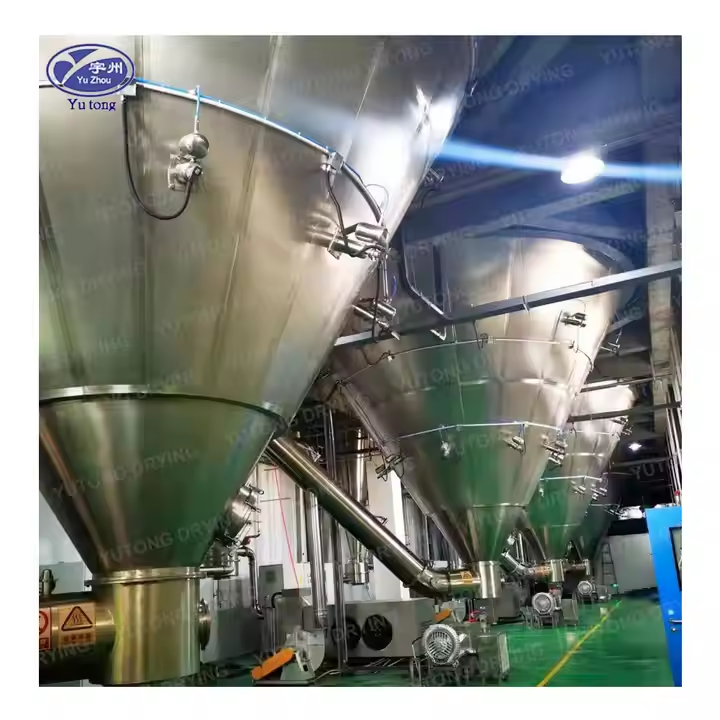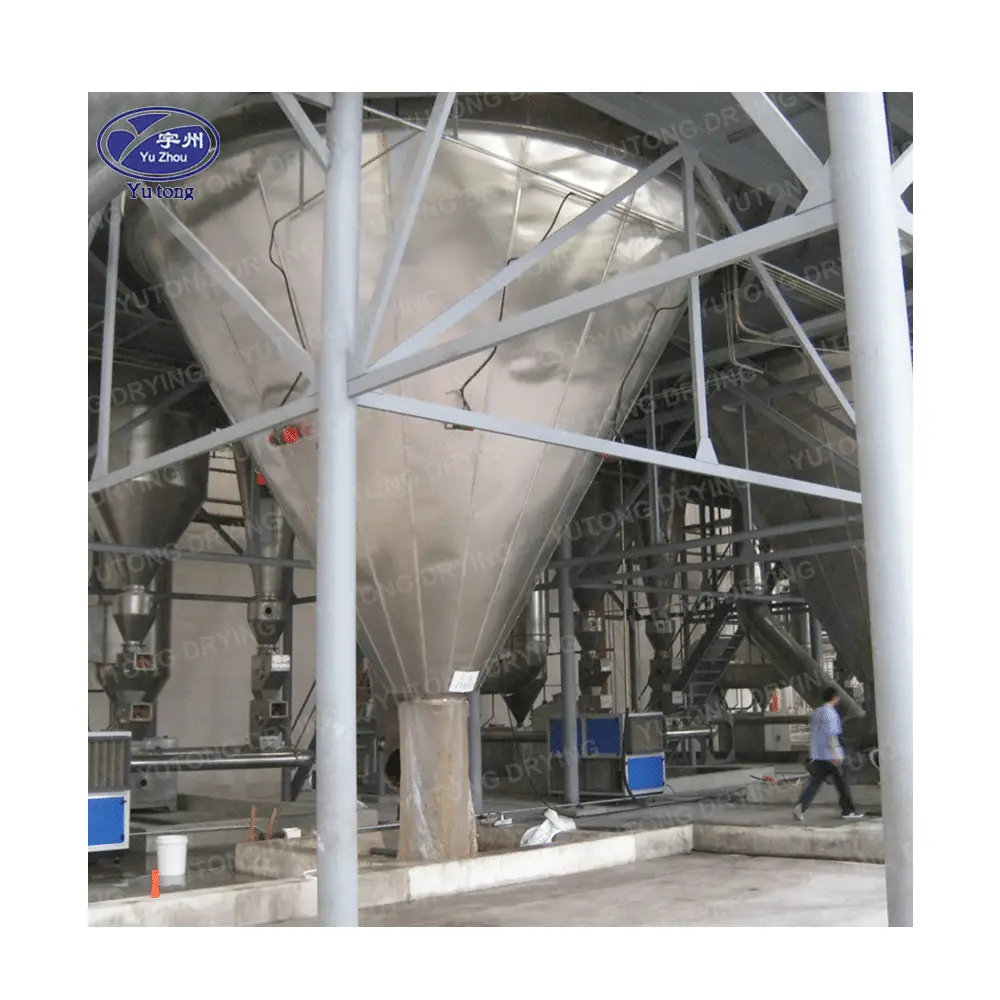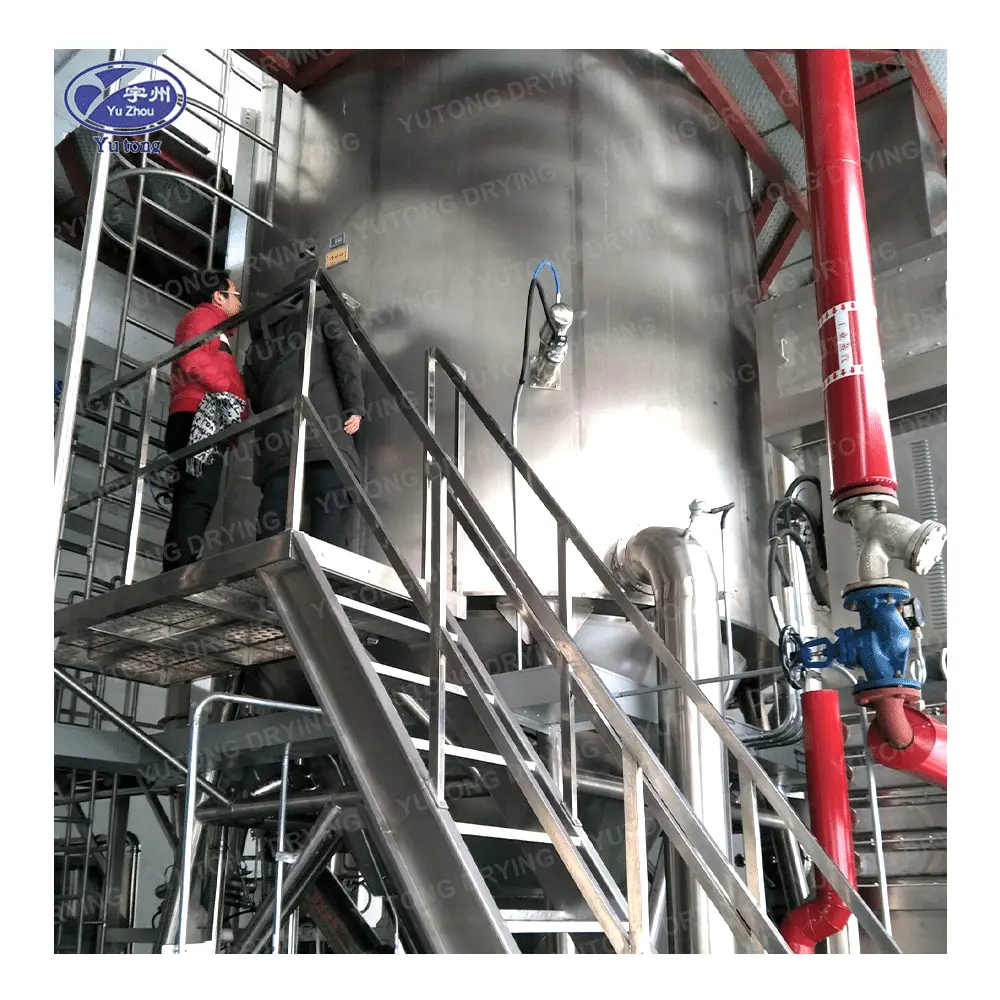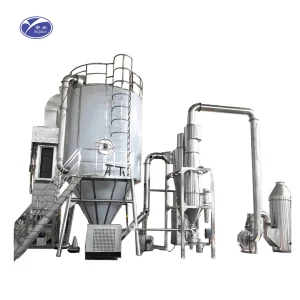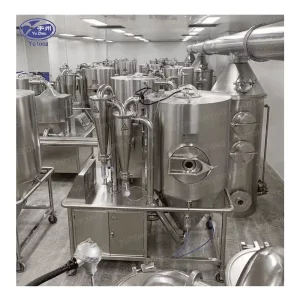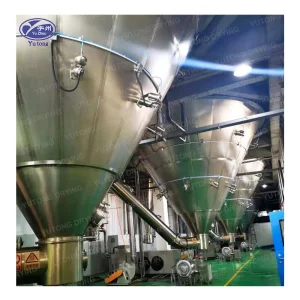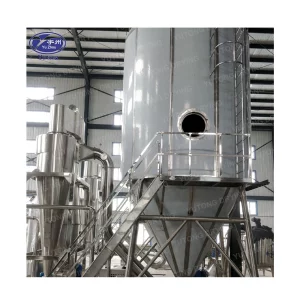Table of Contents
Product Detail
ceramic spray dryer
In the world of ceramics, precision and consistency are key. One of the most critical tools in achieving these qualities is the ceramic spray dryer. This essential equipment is widely used in the ceramic industry to produce high-quality ceramic powders. But how exactly does it work, and why is it so important? In this article, we’ll explore the intricacies of the ceramic spray dryer, its applications, and the benefits it brings to the ceramic industry.
What is a Ceramic Spray Dryer?
A ceramic spray dryer is a device used to convert liquid materials into dry powders. It sprays the liquid into a hot drying chamber, where the moisture quickly evaporates, leaving behind fine particles. The resulting powder is uniform and has a controlled particle size, which is crucial for the production of high-quality ceramics.
Essential Components of a Spray Dryer
A ceramic spray dryer typically consists of several key components, including the feed pump, atomizer, drying chamber, and cyclone separator. The feed pump delivers the slurry to the atomizer, which breaks the slurry into fine droplets. The drying chamber provides the hot air necessary for evaporation, and the cyclone separator collects the dried powder.
The Science Behind Spray Drying
The science behind spray drying involves complex thermodynamics and fluid dynamics principles. When the slurry is atomized into the drying chamber, rapid heat exchange occurs, causing the moisture to evaporate almost instantaneously. This process depends heavily on the droplet’s surface area and the temperature gradient between the droplet and the drying air.
Importance of Particle Size Control
Controlling the particle size in spray drying is vital for several reasons. Uniform particle size ensures consistent packing density, which affects the mechanical properties of the final ceramic product. It also influences the sintering behavior of the powder, impacting the final texture and strength of the ceramics.
How Does a Ceramic Spray Dryer Work?
The process begins with preparing a slurry, a mixture of ceramic materials and water. This slurry is then fed into the spray dryer, where it is atomized into tiny droplets by a nozzle. The droplets are introduced into a stream of hot air, which rapidly evaporates the water content. As the droplets dry, they form into fine ceramic powders.
Slurry Preparation
Preparing the slurry is a critical step in spray drying. It involves blending ceramic raw materials with water and sometimes additives to form a homogenous mixture. The slurry’s viscosity and solid content must be carefully controlled to ensure efficient atomization and drying.
Atomization Process
Atomization is the process of breaking the slurry into fine droplets. This is achieved using either a nozzle or rotary atomizer. The choice of atomizer affects the droplet size and distribution, which in turn influences the drying rate and final powder characteristics.
Drying Chamber Dynamics
The drying chamber’s design and operation are crucial for efficient drying. The hot air temperature, airflow pattern, and residence time of the droplets in the chamber determines how effectively the moisture is evaporated. These parameters must be optimized to prevent issues like incomplete drying or overheating.
Applications of Ceramic Spray Dryers
Ceramic spray dryers are used in various applications within the ceramic industry. Some of the most common include:
Production of Ceramic Powders
Spray dryers are essential in the production of ceramic powders used in various applications, from tableware to advanced electronics. The ability to control particle size and moisture content ensures that the powders meet the specific requirements of different ceramic products.
Processing of Kaolin
Kaolin, a type of clay, is widely used in the ceramic industry. A kaolin spray dryer is specifically designed to process this material, transforming it into a fine, dry powder suitable for use in ceramic production.
Manufacturing of Ceramic Coatings
Ceramic coatings enhance the properties of various products, such as increasing wear resistance or providing thermal insulation. Spray dryers play a crucial role in producing the powders needed for these coatings.
Advanced Ceramic Materials
In addition to traditional ceramics, spray dryers are used to produce powders for advanced ceramic materials. These include components for electronics, aerospace, and biomedical applications, where precise material properties are required.
Production of Catalysts
Ceramic spray dryers are also employed in the production of catalyst powders. These powders are used in chemical processes and emissions control technologies, where high surface area and uniformity are crucial for performance.
Benefits of Using a Ceramic Spray Dryer
The use of ceramic spray dryers offers several advantages to manufacturers in the ceramic industry.
Consistent Quality
One of the primary benefits is the ability to produce powders with consistent quality. The control over particle size and moisture content ensures that the final ceramic products are uniform and meet the desired specifications.
Increased Efficiency
Spray drying is a highly efficient process, allowing manufacturers to produce large quantities of ceramic powders quickly. This efficiency translates to cost savings and increased productivity.
Versatility
Ceramic spray dryers can handle a wide range of materials, making them versatile tools in the ceramic industry. Whether it’s processing kaolin or producing advanced ceramic powders, these dryers can be adapted to meet various needs.
Enhanced Product Performance
The uniformity and quality of powders produced by spray dryers contribute to the enhanced performance of the final ceramic products. This can lead to improved mechanical properties, thermal stability, and resistance to wear and corrosion.
Reduction in Waste
Spray drying allows for precise control over the drying process, reducing waste compared to other drying methods. This efficiency not only saves material costs but also minimizes the environmental impact of ceramic production.
Types of Ceramic Spray Dryers
Several types of spray dryers are used in the ceramic industry, each with unique features and benefits.
Dorst Spray Dryer
The Dorst spray dryer is a popular choice in the industry and is known for its reliability and precision. It’s designed to handle a variety of ceramic materials and is used to produce high-quality powders.
Custom Spray Dryers
Some manufacturers opt for custom spray dryers tailored to their specific needs. These dryers are designed to accommodate unique materials or production requirements, providing flexibility and adaptability.
Nozzle and Rotary Atomizers
Spray dryers can also be classified based on the type of atomizer used. Nozzle atomizers are ideal for producing fine, uniform powders, while rotary atomizers are better suited for handling larger volumes.
Fluidized Spray Dryers
Fluidized spray dryers use a fluidized bed to enhance the drying process. This type of dryer is particularly effective for heat-sensitive materials and offers superior control over the moisture content and particle size distribution.
Mini Spray Dryers
For research and development or small-scale production, mini spray dryers are an excellent choice. They offer the same precision and control as larger units but in a compact form, making them ideal for testing and prototyping new ceramic products.
Maintenance and Operation of Ceramic Spray Dryers
Proper maintenance and operation are essential for ensuring the longevity and efficiency of ceramic spray dryers.
Regular Cleaning
Regular cleaning is crucial to prevent the buildup of materials inside the dryer, which can affect performance. Manufacturers should follow a strict cleaning schedule to maintain optimal operation.
Monitoring and Adjustments
Operators should continuously monitor the drying process to ensure that all parameters are within the desired range. Adjustments may be necessary to maintain consistent quality and efficiency.
Troubleshooting Common Issues
Common issues with spray dryers include nozzle clogging and uneven drying. These problems can be resolved through regular maintenance and careful monitoring of the process.
Routine Inspection and Servicing
Routine inspections and servicing are vital to identify wear and tear or potential issues before they result in significant downtime. Components such as the atomizer, pumps, and heating elements should be regularly checked and maintained.
Training and Safety Protocols
Ensuring that operators are well-trained and familiar with safety protocols is essential. Proper training minimizes the risk of accidents and ensures that the spray dryer is used effectively and safely.
The Future of Ceramic Spray Drying
The ceramic industry continues to evolve, and spray drying technology is no exception. Advances in materials and process control are leading to even more efficient and precise spray dryers.
Innovations in Atomization
New atomization technologies are being developed to improve the efficiency and versatility of spray dryers. These innovations allow for even greater control over particle size and distribution.
Sustainable Practices
As sustainability becomes a growing concern, manufacturers are exploring ways to reduce the environmental impact of spray drying. This includes using energy-efficient systems and exploring alternative drying methods.
Integration with Industry 4.0
The integration of Industry 4.0 technologies into spray drying processes is on the rise. Automation, data analytics, and IoT devices are being used to enhance monitoring, control, and optimization of the drying process, leading to more innovative and more efficient operations.
Development of Hybrid Drying Techniques
Research into hybrid drying techniques that combine spray drying with other methods is ongoing to enhance efficiency and product quality. These techniques aim to overcome the limitations of traditional spray drying, offering new possibilities for the ceramic industry.
Focus on Energy Efficiency
With rising energy costs and environmental concerns, the focus on energy-efficient spray dryers is increasing. Innovations in heat recovery, airflow optimization, and material handling are contributing to more sustainable operations.
Conclusion
The ceramic spray dryer is an indispensable tool in the ceramic industry, providing manufacturers with the ability to produce high-quality powders with precision and efficiency. From processing kaolin to manufacturing advanced ceramic coatings, spray dryers play a crucial role in a wide range of applications. As technology continues to advance, these dryers will only become more efficient and versatile, helping the ceramic industry meet the demands of the future. The ongoing developments in atomization, sustainability, and integration with digital technologies promise a future where ceramic spray drying is not only more productive but also more environmentally responsible.
Specifications
|
spec
|
ZPG-25
|
ZPG-50
|
ZPG-80
|
ZPG-100
|
ZPG-150
|
ZPG-200
|
ZPG-300
|
|
|
evaporation capacity(kg/h)
|
25
|
50
|
80
|
100
|
150
|
200
|
300
|
|
|
process amount of material liquid(kg/h)
|
25-34
|
50-68
|
80-108
|
100-135
|
150-203
|
200-270
|
300-406
|
|
|
output of finished pcoduct(kg/h)
|
4.8-7.2
|
9.2-14
|
14.8-22.4
|
18.4-28
|
24-42
|
36.8-56.4
|
55-85
|
|
|
solid content of material liquid( %)
|
18-30
|
|||||||
|
moisture content of finished product( %)
|
3-5
|
|||||||
|
electric power(kw)
|
63
|
132
|
153
|
204
|
246
|
330
|
||
|
heat source
|
Steam pius electricity
|
|||||||
|
Collecting method of product and its efficiency
|
Grade one or two or three stage cyclone wet dust remover is greater than or equal to 95%
|
|||||||
|
automatic control meters and instruments
|
indicator of not air and exhaust air temperature
|
|||||||
|
temperature of air inlet(℃)
|
160-220
|
|||||||
|
temperature of air outlet(℃)
|
80-100
|
|||||||
|
L
|
7000
|
8000
|
9800
|
11000
|
12200
|
14100
|
15000
|
|
|
overal dimensions(mm)
|
W
|
4000
|
5000
|
5700
|
6200
|
7000
|
7800
|
9000
|
|
H
|
6200
|
6900
|
8000
|
8900
|
10750
|
11900
|
13000
|
|
Applications
No Content Matching Your Selection Is Found.

